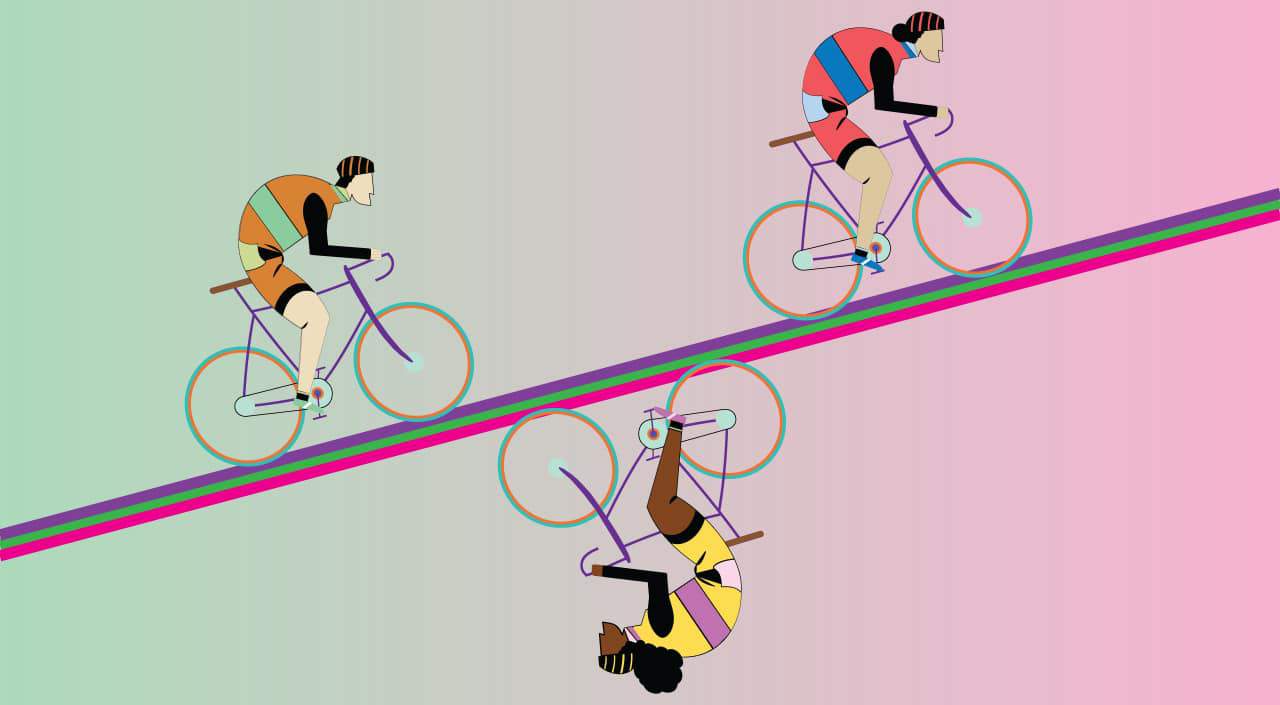
Race, Space, and Equity in Cycling
Guest Editorial Blog Post by Khadijat Yussuff, Program Assistant, Women and Non-Binary Program, BikePGH
Frequently, we’ll find ourselves perusing yet another study or article documenting the myriad benefits of cycling around one’s neighborhood; improved physical and emotional health, more cost efficient transportation, better community engagement via improved environmental education, maintenance, and access.
When it comes to tackling inequity within the politics surrounding cycling, we have to face tough questions and harsh truths head-on, such as who we feel deserves access to an improved way of life, and which communities and demographics we’re prioritizing when we implement these resources.
For low income, predominantly Black neighborhoods, aversion to biking as a primary form of transportation is largely due to: environmental racism in the form of poor urban planning and the tendency to use these locations for industrial ventures which produce hazardous health conditions, as well as societal racism in the form of blatantly disparate bike-related police encounters and arrests between Black and non-Black riders and a lack of consideration within mobility justice and urban design circles.
If other cyclists and drivers weren’t already finding verbally or physically aggressive ways to deter Black bikers as in the days of Kittie Knox or Major Taylor, we find despairing statistics surrounding environmental racism in low-income communities. From increased low-level police enforcement to industrial pollution and a lack of consideration during meetings focused around city infrastructure, we repeatedly find that American cities fail their poor when it comes to optimizing health and transportation (among other pertinent topics).
Strategies for change
In order to better address race and income-based inequities in health, transportation, community engagement, and the culture surrounding cycling, there are a few immediate alterations we can make to how we think about accessibility and advocate for people on bikes.
In an assessment of the differences between biking in the Netherlands and in the United States, Chris Bruntlett expounds on the post-war origins of the prioritization of the car over all other forms of transportation in the West, but also provides the Dutch solutions for minimizing overall street congestion that could potentially also aid low-income communities: combining biking with other forms of public transportation by having bike parking and/or rideshare available at major bus and train stations, and focusing on “traffic-calming” infrastructure as environments are built[1].
When it comes to commuting, lower income community members tend to spend more time commuting than their more affluent counterparts via public transportation due to being forced to live further away from main public transport routes because of higher property values, and would therefore benefit more from subsidized city infrastructure that allows for greater mobility among the poor and working classes.
In the words of urban anthropologist Adonia Lugo, “we have not created alignment between the everyday lives of the people who have been locked out of suburban success and the advocacy visions of people who’ve benefited from suburban segregation and success.[2]” As a result, we are looking at a long-term breakdown of what NYU Professor of Sociology Eric Klinenberg terms “social infrastructure,” where the concept of cycling becomes hostile to the people who might (and in many cases, already do) benefit from it most.
The view of public streets as places for positive community interaction is less pronounced in neighborhoods perceived as dangerous by inhabitants or law enforcement, and as a result advocacy efforts don’t tend to focus on the longevity of the community or of cycling as a primary form of transportation for constituents of color, while increased police presence in these neighborhoods means that Black and ethnic-minority bikers are experiencing race-based inequity from both fellow constituents and the cops.
Changes made to these less affluent neighborhoods to promote cycling garner resentment and accusations of gentrification, because they tend to be sudden and often do not address the needs of longtime residents. The lack of community benefits in many redesign projects calls Oscar Newman’s “defensible space” theory into play, namely the idea that crime, and therefore perceptions of danger, is a psychosocial phenomenon that can be controlled by environmental design.
Giving Black, low-income, and otherwise underrepresented residents a sense of responsibility for their environment depends first and foremost on creating and championing spaces that meet their professional and community needs.
In order to do this successfully, mobility justice and advocacy groups need to begin investing long-term in community-oriented programs that are age and gender-inclusive. That means implementing and supporting local bike shops, clinics, workshops, and organizations (like the Pittsburgh Major Taylor Cycling Club) within areas with the lowest participation in cycling, and making sure that larger community events are accessible across socioeconomic lines[3].
Garnering the least heard voices in our communities takes deliberate effort that city planners and organizers must employ in every situation regarding access to public spaces, and if we care about protecting and augmenting quality of life for Black and Brown people, that includes creating job opportunities at every level for folks from low-income, ethnic-minority neighborhoods. Lastly, Lugo proposes that when championing cycling as a social benefit, we have to be mindful of the surrounding political atmosphere[2].
Mobility advocacy that supports causes and organizations that are detrimental to any residents’ quality of life is not advocacy at all, but elitist lobbying. However, with a growing body of research surrounding the strong links between cycling, race & socioeconomic status, health, and resulting mortality rates, we can better analyze where pedestrian and cycling advocacy can have notably positive community impacts.